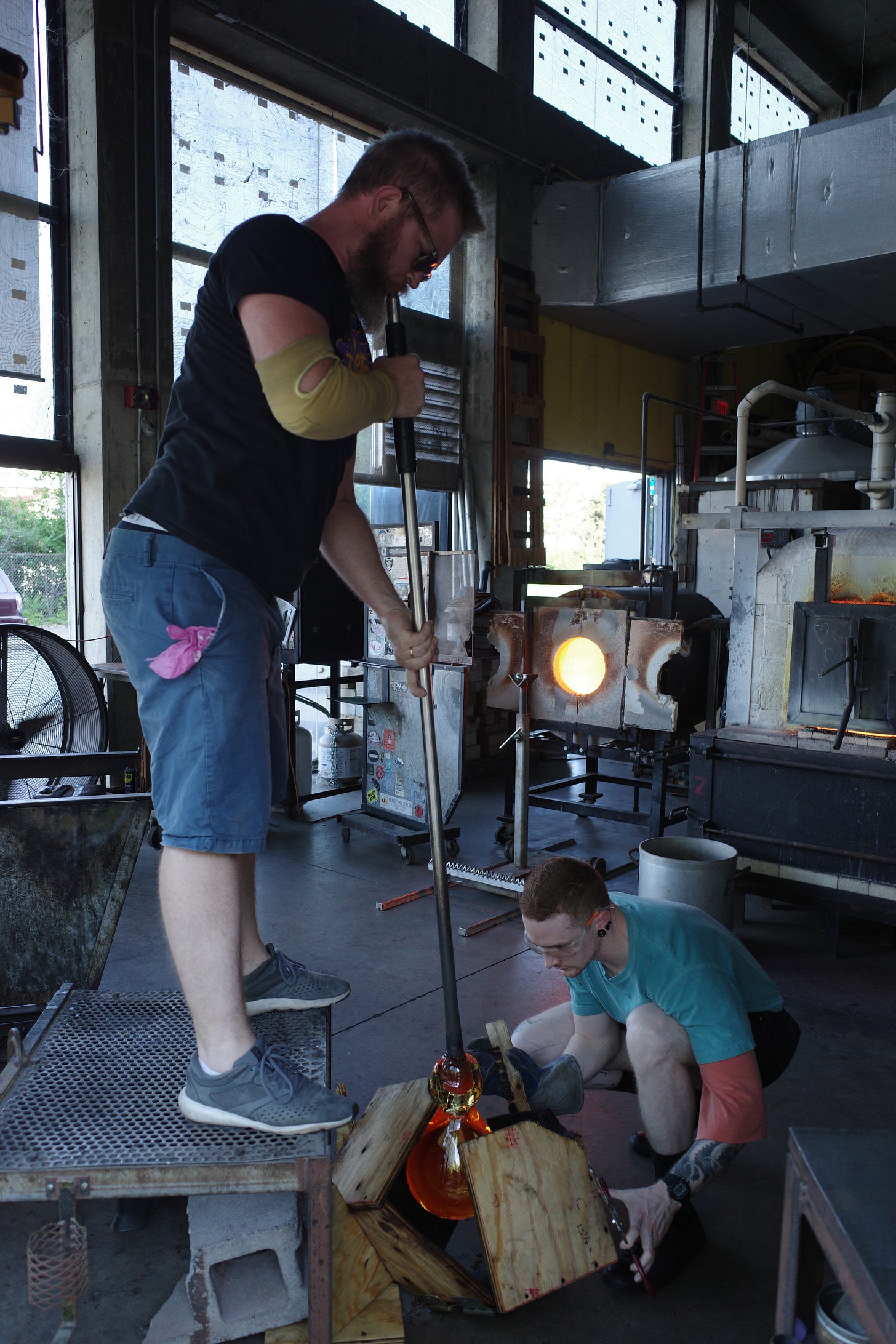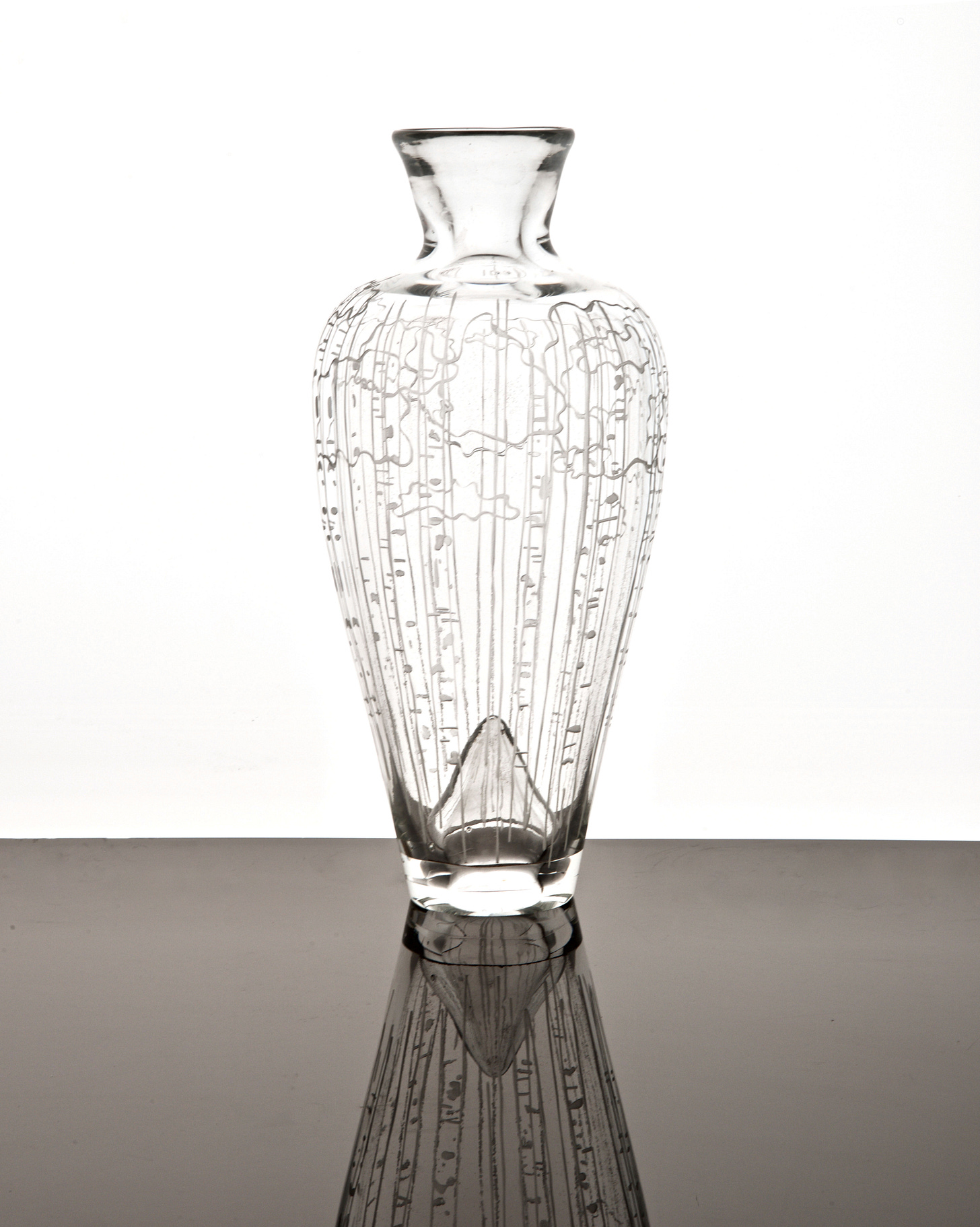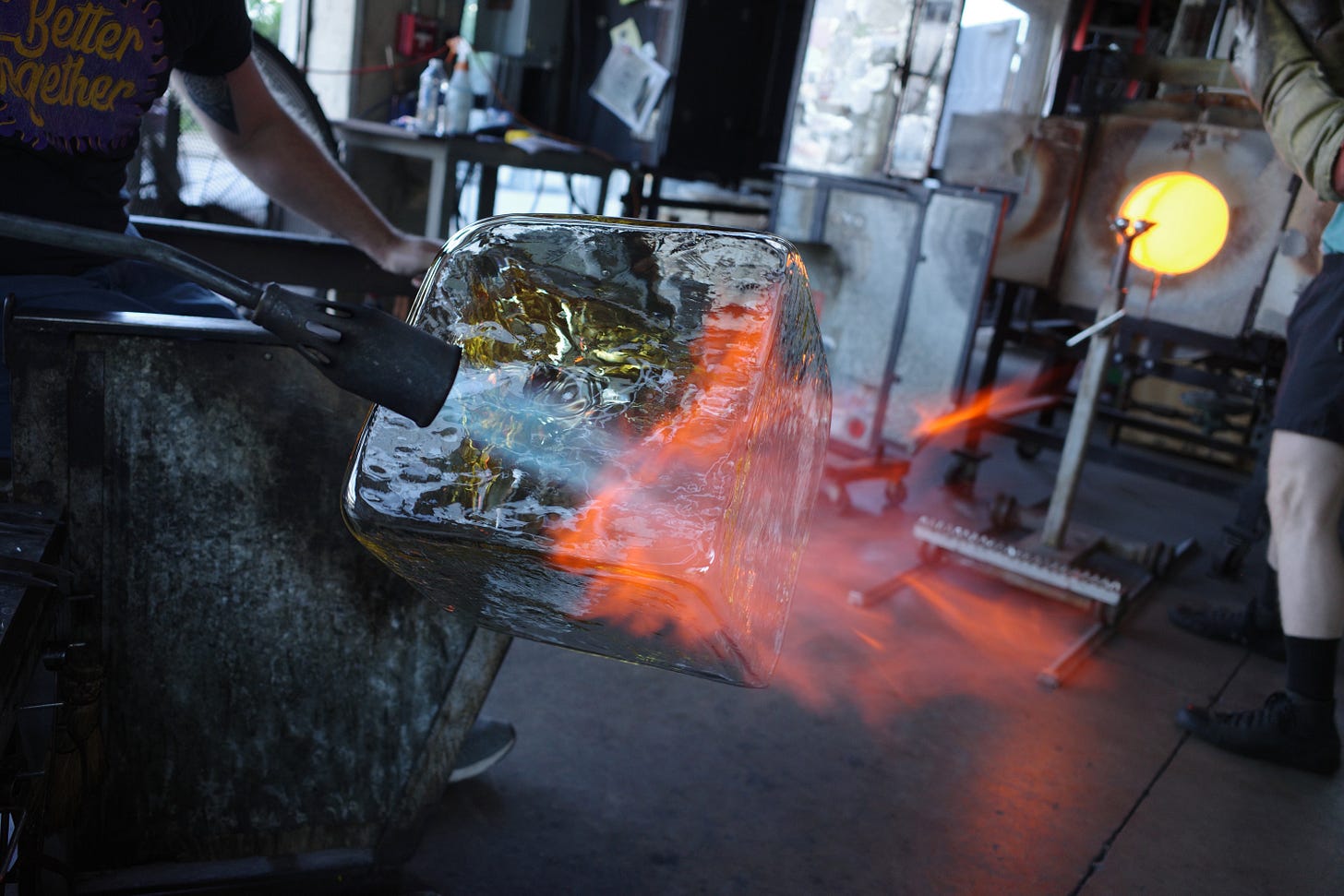It started with me asking for Adam’s rejects. To my untrained eye, every blob of glass was amazing. Though embarrassed by his “failures,” he allowed me to play with them, first learning to sandblast (though it’s actually fine metal particles). Using a stencil, this can create very fine and deep lines, otherwise it’s a verrry frosty surface.
The first project we did was Birch Wood.1 We used buttercut—a flat, rubbery material that adheres to the glass. You can draw your idea on the material and cut away where you want to etch the glass. It taught me to be deliberate with positive and negative space—invert the design, in other words.
In this regard, I improved with the second design, Bird Wing, and I am rather infatuated with the concepts; bones and birds and the mechanics of movement, so the research was highly enjoyable and playing with the form and layout was sublime! I captured the wing, feathers, and claw, which wrap around the shape creating a sort of interference pattern as it turns.
Meanwhile, there was a vase with buttercut2 that I didn’t quite have an idea for, so we let our first kiddo (not quite three at the time) doodle on it. We used three different colors, allowing me to cut them in stages so as not to make a big mess (mentally as well as with all the intersecting lines and shapes). I had also hoped to create different depths, but I didn’t have a feel for the technique yet. Lessons learned and all that. Still pretty neat. Honest and organic.
Our most recent collaboration jumped us forward several steps in our designs and abilities. This time I developed the concept and the hubs (and his teammate, Bram) brought it to fruition.
Around June (2023), Louisville Visual Arts (LVA) sent out a newsletter of artist opportunities, mentioning one for Bernheim’s Connect exhibit. “Bernheim Arboretum and Research Forest” is a big ol’ park about twenty-five miles south of Louisville. Tons of trails, modest bodies of water, and a lot of art. BIG ART. There are many incredible events throughout the year, including artist residencies (yes, we’ll apply!).
I’d been thinking about climate change and I got hooked on the idea of floating ice cubes. Clusters and individuals all over the lake, originally to float alone. We later decided we needed to anchor them so they wouldn’t float anywhere dangerous, get lost (or stolen), and/or shatter—but this allowed us to add solar-powered lights!
The exhibit was to go up in early August (with a big party, woot woot!) and come down in late September. They were offering $1000 (we broke even!) and they wanted installations around Lake Nevin (perfect!). The location they chose for our piece ended up being prime real estate, too: in the water beside a beautiful wooden bridge on a popular walking trail.
Adam began with a small-ish wooden mold of a cube (soaked in water to keep it from being as flammable).
He made two glass cubes, and lthough one “failed” (cracked, in this case), I plugged them both with silicone and got them floating in the kitchen sink.
We researched underwater pool lights and got the go-ahead from Bram, an architectural lighting designer and a glassblower. (Awesome, right?)
We thought-experimented the cables and anchoring system. Bought supplies (concrete blocks, wire, clamps and fasteners, etc). Fiddled with some solar-powered pool lights. You get it.
Meanwhile Adam made another, larger mold and twenty cubes. Each took around fifteen pounds of glass, massive strength, and great teamwork. There is a breathtaking, predominantly non-verbal choreography to glassblowing. Please come visit and observe (if not participate)!3

The best description I’ve heard of glassblowing is that it’s the inverse of ceramics. With a glob of clay, you grab it and manipulate it from the outside in. In glassblowing you start with a glob of glass, but work from the inside out—the negative space inside the glass is where you begin to create the idea, the shape.
The last hurdle was the installation, which we had a few hours to do between school drop-offs and pick-ups and missed work. Plus, it was one of the hottest days on record. We’d anticipated as much going wrong as possible—especially the loss of tempers—and it turned out to be a wise exercise. Even better, however, was the absolutely brand-spanking new question I found myself asking:
“What if it… went right? What if it worked??”
Was this hope? Optimism? Might it even be confidence?
Anyhow, we were rewarded with a boat missing an oar.
…But it had a motor!
Then the motor didn’t work.
…But I’m a water-baby, and rowed us there anyway (singing and pretending to be in Venice the entire time, of course).
Meanwhile, I thought I’d be able to get in the water, but it turned out to be terrifyingly murky and plant-y.
…Then there was a snapping turtle sighting.
Anyhow, we still triumphed! We did an amazing thing and we did it without fighting or losing money! That feels kinda big. I’m proud of us and I very much like how everything turned out.
Beautiful and strange, unexpected yet apropos.
So. What should we make next?
Which, because of the “mountain” in the base, displays tall flowers really nicely!
And a second Birch Wood, which I don’t have pictures of, to my great embarrassment! Toto and Boop, think you could snap a few for me, please?
I’m serious! Come stay with us!












Will do, but they won't be as "professional" as what you have ;-)